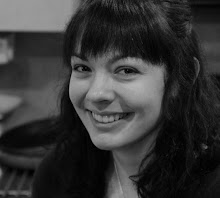It’s one of those little things that I’d always taken for granted, one of a list of settings in Final Cut Pro that I had generally ignored, because I had never really seen much use for it... or rather, I had, but had not realised it was this that I needed.
 |
| Colour Corrector in Final Cut Express |
What is it, exactly?
The little widget that I am now going to praise with a dedicated article is the fantastic Colour Corrector, also sometimes used as the 3-Way Colour Corrector. It is the tool that can miraculously change the image of a video from a bland colour palette to a vibrantly colourful one, or vice versa; it changes contrast, it adjusts saturation, it manipulates the image in such subtle but impactful ways - or, if you would prefer, not quite so subtle.
I have recently discovered the joys of colour correcting, and thought I’d share.
The film I am currently working on at SFU is a short black & white film noir (of sorts), and at first my co-writers/directors/producers/etc and I laughed at the thought of using colour correcting on a black and white film. I was skeptical, for sure - what could colour correcting possibly change in the film to make it better? As it turns out, it can do quite a lot to enhance the already cool looking black and white footage: deeper blacks and higher contrast gives an entirely moody and stylised look to the film, as well as helping to maintain a visual consistency between all the shots. This last part turned out to be quite important, as we found that certain shots were brighter than others. Now, they are nearly identical. Thank you, 3-Way CC.
Here are some examples of things you can do with colour correcting, just so you can see exactly what I’m talking about.
I work with Final Cut Express at home and Final Cut Pro at school, so naturally there will be differences between systems; for example, FCE does not have 3-Way CC, but it does have your basic colour corrector which works just fine. To experiment, I applied the colour corrector to some shots from another short film I’m editing in what little spare time I have, and these were the results.
The first image is from a scene in the living room of the house, with my two actors sitting on a couch and talking. There was strong sunlight coming in behind them, so everything toward the window is very bright and the actors are much darker and very contrasty.
 |
| Note: click on photo for larger image. |
To make them less dark and balance the image a bit more, I can do this:
These were very subtle changes, but notice how you can see their faces much better now? I could keep going and adjust settings here and there to make the window less bright if I want to as well.
Next, if you want to give your film a more stylised look that deviates from the natural colour and lighting, there are plenty of options to explore. First, we’ll take this image from the same film, with our characters at a table instead. Again, there’s quite a lot of contrast in this image, and also some very rich colours.
What if we don’t want the scene to be quite so colourful? What if we want to change the tone of the scene, or just make it look different?
In this case, I made the blacks darker, the whites less bright, and turned up the mids - basically, slightly less contrast but the brightness of the entire image shifts to just gradually darker shades. Then, I brought the saturation way down, giving the image that washed out look; and finally, to accent, I shifted the colour balance toward the reds to enhance the table cloth and wall.
The finished product:
It’s cool what you can do with the colour corrector, isn’t it?
Of course, these are only very subtle examples - there’s much more that can be messed around with where the colours and balances are concerned. You can even make the image look like it does not belong on Earth at all, like the following:
I’m not sure on which planet they’ve decided to play chess, but it certainly isn’t ours - not with that lime green sky!





0 comments:
Post a Comment